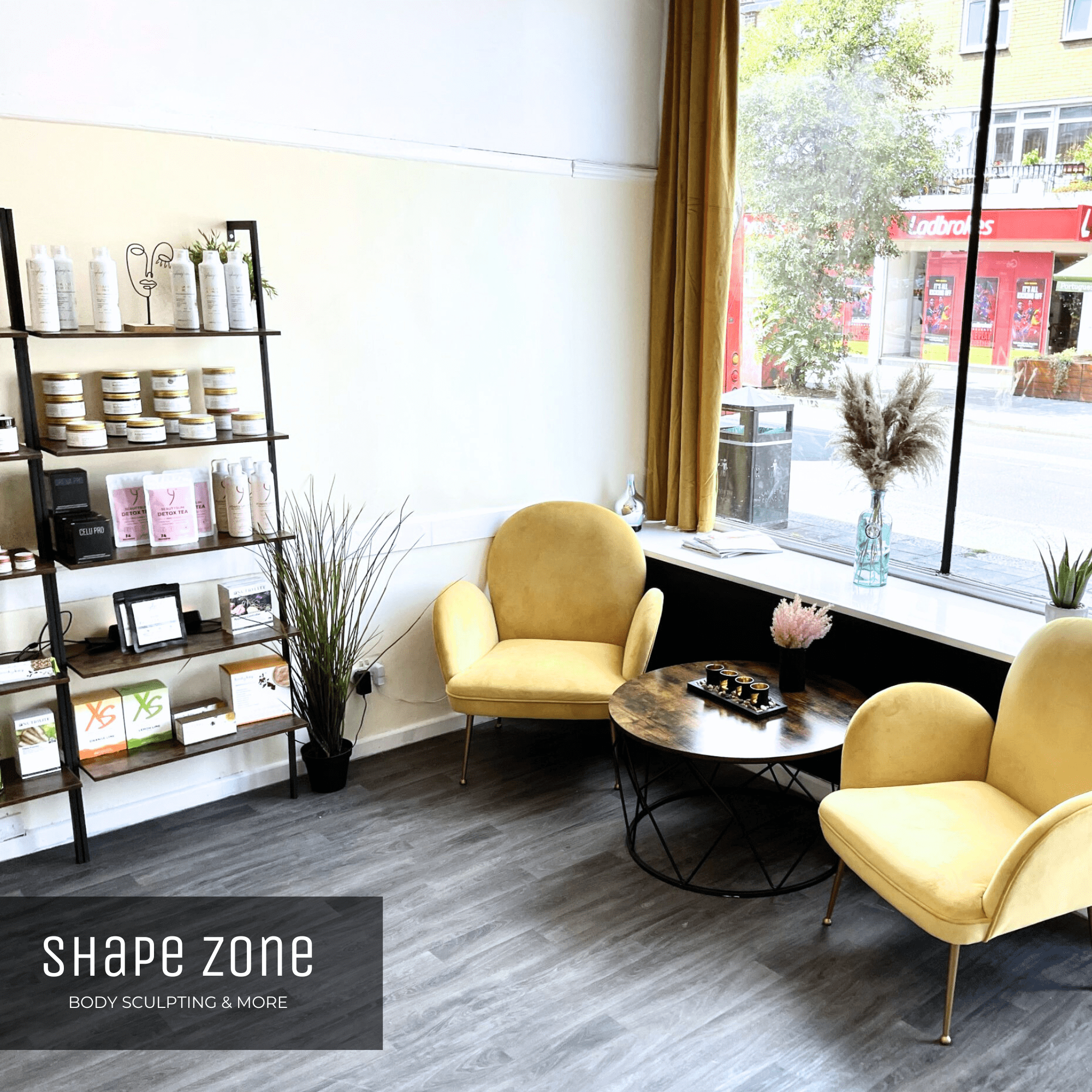Sunbeds I Tanning
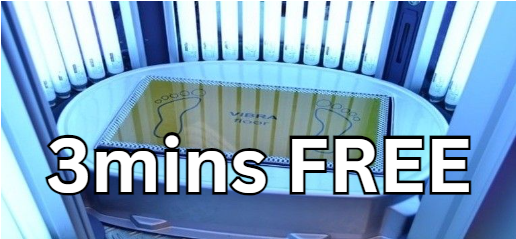
Sunbeds & Tanning in Shape Zone London on Wandsworth Road, SW8
Welcome to Shape Zone London – Your Premier UV Tanning Destination in Wandsworth Road, SW8
At Shape Zone London, we are dedicated to providing a luxurious, safe, and effective tanning experience for clients in Wandsworth Road, Nine Elms, Battersea, Vauxhall, Clapham, Stockwell, Brixton, and Chelsea. Our state-of-the-art sunbeds and expert team ensure that every visit leaves you with a flawless, natural-looking tan that enhances your confidence and style.
Luxury UV Tanning in the Heart of Wandsworth Road
If you’re looking for the ultimate UV tanning experience near Battersea Power Station, Clapham Junction, or Vauxhall Station, Shape Zone London is your go-to salon. Our advanced sunbeds are designed to deliver optimal tanning results while prioritizing your skin’s health. Whether you prefer a stand-up or lay-down tanning experience, our cutting-edge technology ensures even coverage, a natural glow, and long-lasting results.
Our Sunbed Tanning Services
We offer a variety of professional sunbed tanning solutions to suit every skin type and preference:
Premium Stand-Up Sunbeds: Achieve an all-over, even tan in a hygienic, contact-free environment. Perfect for busy professionals and fitness enthusiasts near Clapham Common and Nine Elms who want a quick, efficient tanning session.
Luxury Lay-Down Sunbeds: Relax and unwind while achieving a deep, natural tan. Ideal for clients from Stockwell, Oval, and Kennington who enjoy a comfortable tanning experience.
Express Tanning Sessions: In a rush? Our express tanning options deliver a stunning glow in just a few minutes – perfect for those heading to social events in Chelsea or date nights in Battersea.
Why Choose Shape Zone London for Your UV Tanning?
State-of-the-Art Technology: Our salon features the latest Vibro Plate sunbeds, designed to deliver superior results while protecting your skin.
Personalized Tanning Advice: Our experienced team provides expert guidance to help you achieve your perfect tan while considering your skin type and preferences.
Strict Hygiene & Safety Standards: We follow the highest cleanliness protocols, ensuring a safe and relaxing experience for every client from Battersea Park, Pimlico, and Fulham.
Flexible Packages: Choose from single sessions, multi-session passes, or unlimited monthly memberships. Prices start from just £1.25 per session.
Convenient Location: Easily accessible from Vauxhall Tube Station, Queenstown Road, and Clapham North, our salon is perfect for busy professionals and students looking for a premium tanning experience.
The Benefits of Sunbed Tanning
Many of our clients from Wandsworth, Stockwell, and Kennington choose UV tanning for its numerous benefits:
Boosts Vitamin D Levels: Regular sunbed use can help maintain optimal Vitamin D levels, especially during the winter months.
Enhances Your Natural Glow: Achieve a radiant and healthy complexion without the streaks or uneven tones of spray tanning.
Promotes Skin Rejuvenation: UV exposure can help improve certain skin conditions, such as acne or eczema.
Book Your UV Tanning Session Today
Whether you’re preparing for a holiday in Ibiza, a special event in Chelsea, or just want to maintain a year-round glow in Clapham, Shape Zone London is here for you. Book your appointment online or visit us at our salon on Wandsworth Road, SW8, for a safe, professional, and luxurious tanning experience.
📍 Shape Zone London – Your Local Tanning Experts in Wandsworth, Battersea & Beyond ☎ Call us at +447546254357| 📧 Email: info@shapezone.uk | 🌐 Visit: www.shapezone.uk
Best value stand up and lay down tanning sunbeds on Wandsworth Road, London.
















How Can Vitamin D Help with Psoriasis? David Railton, Medical News Today, Dec 2016 http://www.medicalnewstoday.com/articles/314549.php
Using Vitamin D3 for Faster Eczema Healing. The Flawless Program http://www.flawlessprogram.com/vitamin-d3-deficiency-slowing-eczema-healing
Boosting Your Serotonin Activity! Alex Khorb PHd Psychology Today, Nov 2011 https://www.psychologytoday.com/blog/prefrontal-nudity/201111/boosting-your-serotonin-activity
UV radiation: the risks and benefits of a healthy glow. Maverakis & Sukhov, The Conversation, Feb 2016 http://theconversation.com/uv-radiation-the-risks-and-benefits-of-a-healthy-glow-53604
Low Vitamin D Levels Linked to Advanced Cancers. Charlene Laino, WebMD http://www.webmd.com/cancer/news/20111004/low-vitamin-d-levels-linked-to-advanced-cancers#1
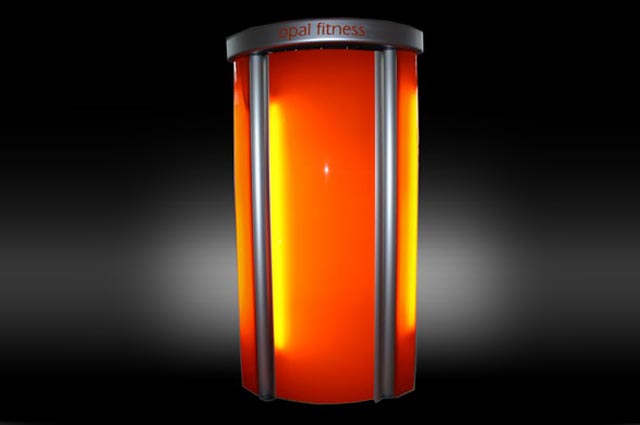
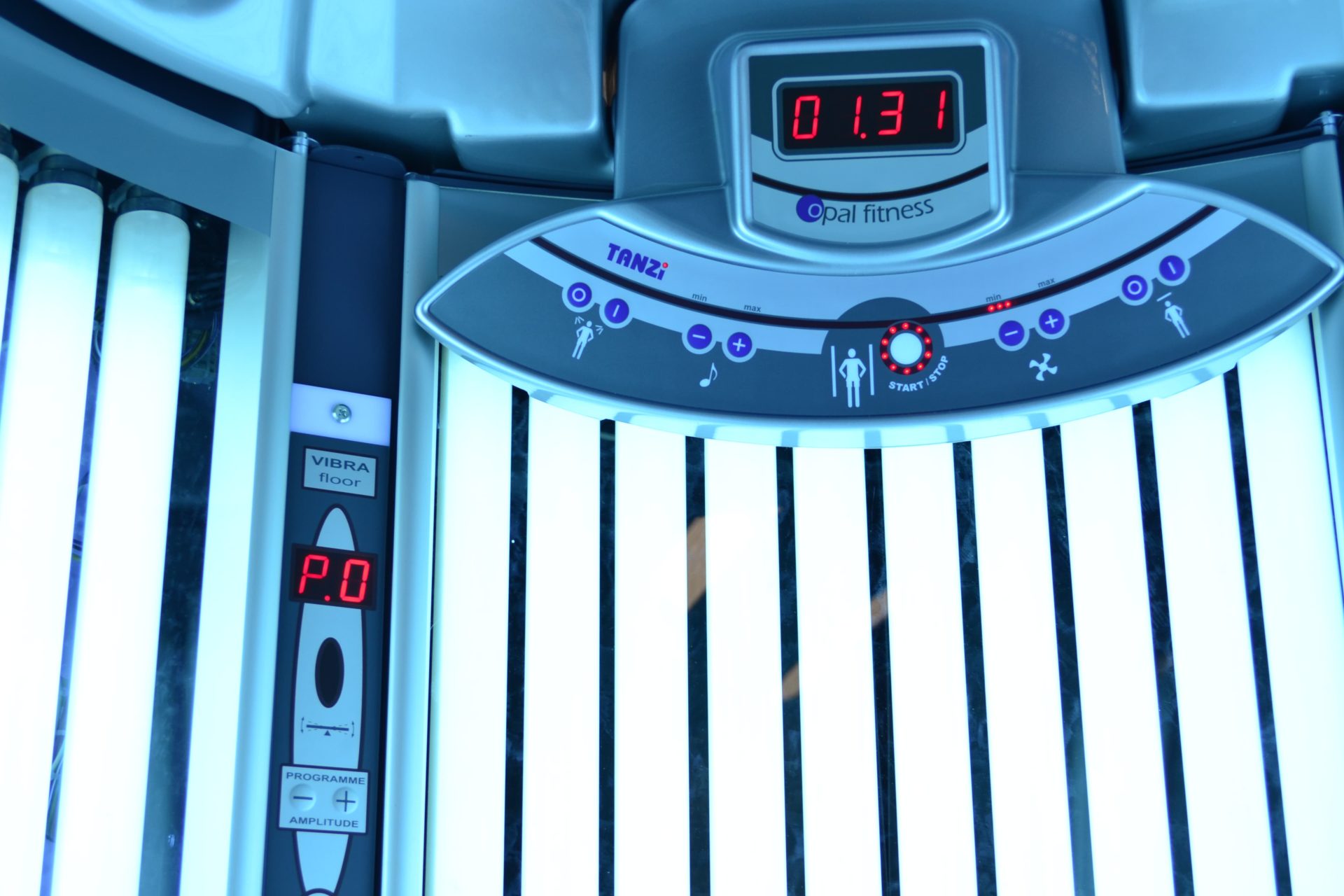
How does it work?
Indoor tanning UV Tanning, Sunbeds
https://en.wikipedia.org/wiki/Indoor_tanning
Indoor tanning involves using a device that emits ultraviolet radiation to produce a cosmetic tan.[a] Typically found in tanning salons, gyms, spas, hotels, and sporting facilities, and less often in private residences, the most common device is a horizontal tanning bed, also known as a sunbed or solarium. Vertical devices are known as tanning booths or stand-up sunbeds.
Reasons cited for indoor tanning include improving appearance, acquiring a pre-holiday tan, feeling good and treating a skin condition.[4] Tanners often cite feelings of well-being; exposure to tanning beds is reported to “increase serum beta-endorphin levels by 44%”. Beta-endorphin is associated with feelings of relaxation and euphoria, including “runner’s high“.[11]
Improving appearance is the most-cited reason. Studies show that tanned skin has semiotic power, signifying health, beauty, youth and the ability to seduce.[47] Women, in particular, say not only that they prefer their appearance with tanned skin, but that they receive the same message from friends and family, especially from other women. They believe tanned skin makes them look thinner and more toned, and that it covers or heals skin blemishes such as acne. Other reasons include acquiring a base tan for further sunbathing; that a uniform tan is easier to achieve in a tanning unit than in the sun, and a desire to avoid tan lines.[48][49] Proponents of indoor tanning say that tanning beds deliver more consistent, predictable exposure than the sun, but studies show that indoor tanners do suffer burns. In two surveys in the US in 1998 and 2004, 58% of indoor tanners said they had been burned during sessions.[50][51]
Vitamin D
[edit]
Vitamin D is produced when the skin is exposed to UVB, whether from sunlight or an artificial source.[e] It is needed for mineralization of bone and bone growth. Exposing arms and legs to a minimal 0.5 erythemal (mild sunburn) UVB dose is equal to consuming about 3000 IU of vitamin D3. Researchers reported that adults who used tanning beds had “robust” levels of 25(OH)D (46 ng/mL on average), along with higher hip bone density, compared to adults who did not use them.[53]
Obtaining vitamin D from indoor tanning has to be weighed against the risk of developing skin cancer.[52] The indoor-tanning industry has stressed the relationship between tanning and the production of vitamin D.[6] According to the US National Institutes of Health, some researchers have suggested that “5–30 minutes of sun exposure between 10 AM and 3 PM at least twice a week to the face, arms, legs, or back without sunscreen usually lead to sufficient vitamin D synthesis and that the moderate use of commercial tanning beds that emit 2%–6% UVB radiation is also effective”.[52][54] Most researchers say the health risks outweigh the benefits, that the UVB doses produced by tanning beds exceed what is needed for adequate vitamin D production, and that adequate vitamin D levels can be achieved by taking supplements and eating fortified foods.[6][55][56]
echnology can sometimes seem overly complicated. But one of the good things about sunbeds is that they’re actually very simple and straightforward, making it easy for all of us to understand how they work, even if we’re not technologically-minded.
So how exactly do they work?
To properly understand how sunbeds work, we need to look at how sunbathing works. When we’re lying on the beach in sunny Spain, those powerful UV rays from the sun are what create chemical changes in the body, affecting the appearance of the skin.
There are two forms of UV light that can travel as far as earth: UVA light and UVB light. UVA light accounts for 95% of all UV light from the sun that reaches our planet. This type of light is what helps produce a natural-looking, golden tan. UVB light accounts for the remaining 5%, and it’s this form of UV light that can redden the skin and make it burn.
Are sunbeds the same as sunbathing? Almost. But not quite. Sunbeds feature tanning lamps that emit the same type of UV rays as the sun. In fact, while models do vary, it’s estimated that the average sunbed emits UV at an index of 12, which is about equal to the UV rays emitted by the midday sun on the equator, so they’re incredibly strong.
What makes sunbeds different is that most sunbeds produce even more UVA (the type of light that produces a tan) and even less UVB (the type of light that can cause burns) than natural sunlight. In fact, studies have found that some models can produce up to 99% UVA and just 1% UVB. That’s why you can build a tan in less time than you can on the beach. Around 20 minutes on a sunbed is equivalent to around 4 hours in the sun.
And that’s really all there is to the technology behind sunbeds. Regardless of whether you opt for an over bed canopy, a lie-down sunbed, or an stand-up sunbed model, sunbeds all work in the same way: they expose the skin to the same UV light as the sun emits. Of course, it’s not really ‘the same’. But studies have found that ‘no difference has been detected between the reaction of our skin to artificially generated radiation and solar radiation of the same composition’, so for all intents and purposes, it’s the same.
How do Sunbeds Produce a Tan?
The technology behind sunbeds only does so much. A big part of how sunbeds work is the body’s own biological responses to UV light. When exposed to this form of light, a chemical known as melanin is released in the body. It’s initially released deep down in cells called melanocytes, but as the chemical rises towards the surface of the skin, it becomes easier to see the brown-coloured hue that it produces. That’s your tan.
And so the best way to use sunbeds is to ensure that all parts of your body that you want tanned are exposed to the tanning tubes which emit the UV light. Depending on the type of bed you’re using, you may need to turn over during your session to expose both the front and back of your body. You should also remember to cover up any areas that you don’t want tanned, and to wear goggles to protect your eyes.
So is a sunbed tan permanent? No. Just like a natural tan, the glow you get from a sunbed is only temporary. How many sunbed sessions to get a tan really depends on your skin type, and skin sensitivity. Most people can develop a great-looking tan in 2 or 3 sessions per week, with each session adjusted based on individual skin type needs.
However, as well as considering how many sunbeds a week to get a tan, you should also think about how long to leave between sunbeds. Some people believe that tanning every day will give them the results they’re looking for, but the truth is that overdoing it can leave you with skin that looks wrinkled, leather, and coarse.
Instead of tanning every day, you’ll get better results if you leave at least 24 hours between sessions, and ideally 48 hours if you have a lighter type II skin type. You should also try not to exceed 60 sessions per year, according to the European Standard. If you’re worried that your tan will fade during your rest periods, don’t. There are a couple of different ways to help maintain your sunbed tan for longer without UV exposure:
1. Exfoliate
By exfoliating your skin before tanning, you’re getting rid of all the dead skin cells on the surface of the skin that are about ready to flake off. This gives you a strong, fresh foundation upon which to build your tan, and can help to boost your rich colour.
2. Use a Tan Extender
Tan extenders are especially formulated lotions and creams that expertly moisturise the skin after tanning to keep it looking and feeling healthy. This can reduce dry, flaking skin after a session, helping your colour to stay looking great for much longer than normal.
https://www.sunbeds.com/blogs/news/how-do-sunbeds-work?srsltid=AfmBOorRIW5pHGOhVij3ty1WbTkWis__e14_x2iECApxoquqc8FZphSa
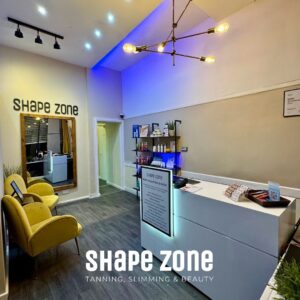
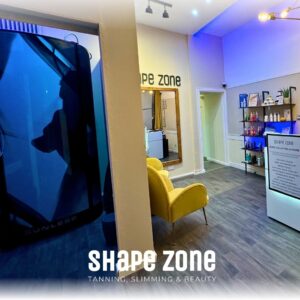
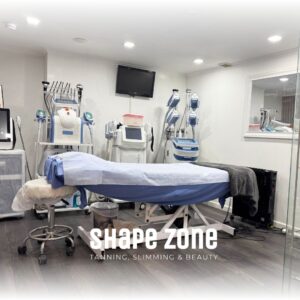
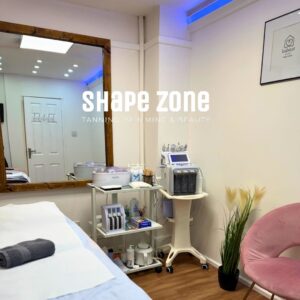
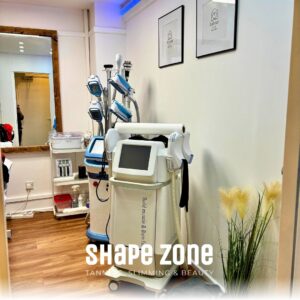
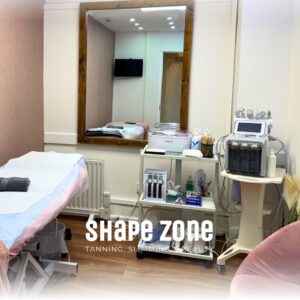
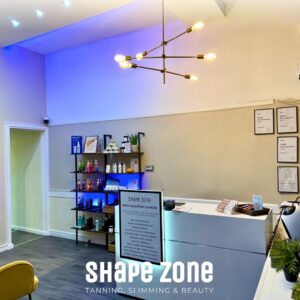
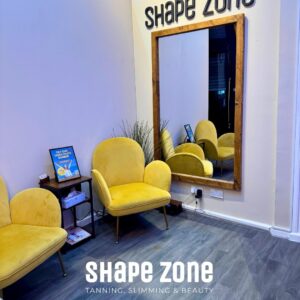
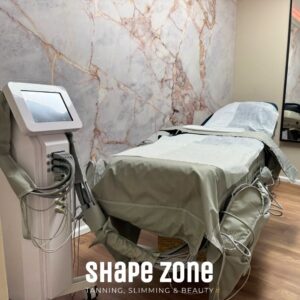
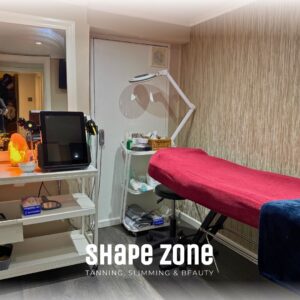
Shape Zone: let us help you discover the best version of yourself
With over 25 years of experience in medical aesthetic treatments, our friendly and qualified practitioners will ensure you have a comfortable and effective Sculpt Pro Muscle Stimulation experience. We use the state-of-the-art Tesla machine for this treatment, and our specialists have undertaken extensive training to operate the device. With Shape Zone, you’re in safe hands.
If you’ve not had a HIEMT Muscle Stimulating treatment before, we offer a free, no-obligation consultation. One of our experts will answer any questions you have about the procedure and put together a customised treatment plan that focuses on the muscle groups you want to target.
